Super fact 37: There is strong evidence for the Big Bang, and we know a lot about how the Universe evolved through time since the Big Bang.
Considering the evidence that has accumulated throughout the years for the Big Bang it is hard to deny it happened. In my experience very few people are aware of this evidence, and they are surprised to find out how much evidence there is and how many details we know about the evolution of the universe. It is easy to believe that scientists are guessing when you don’t know much about the evidence yourself. But they are not guessing. That is why I call this a super fact.
In addition, there’s a lot of misconceptions around the Big Bang as well surprising facts. A few additional things that might surprise people are that the Big Bang was not like an explosion, the Universe did not expand into something. In addition, there might be multiverses and multiple Big Bangs, and there are cyclic models, and so-called eternal inflation. There are things we know and things we don’t know.
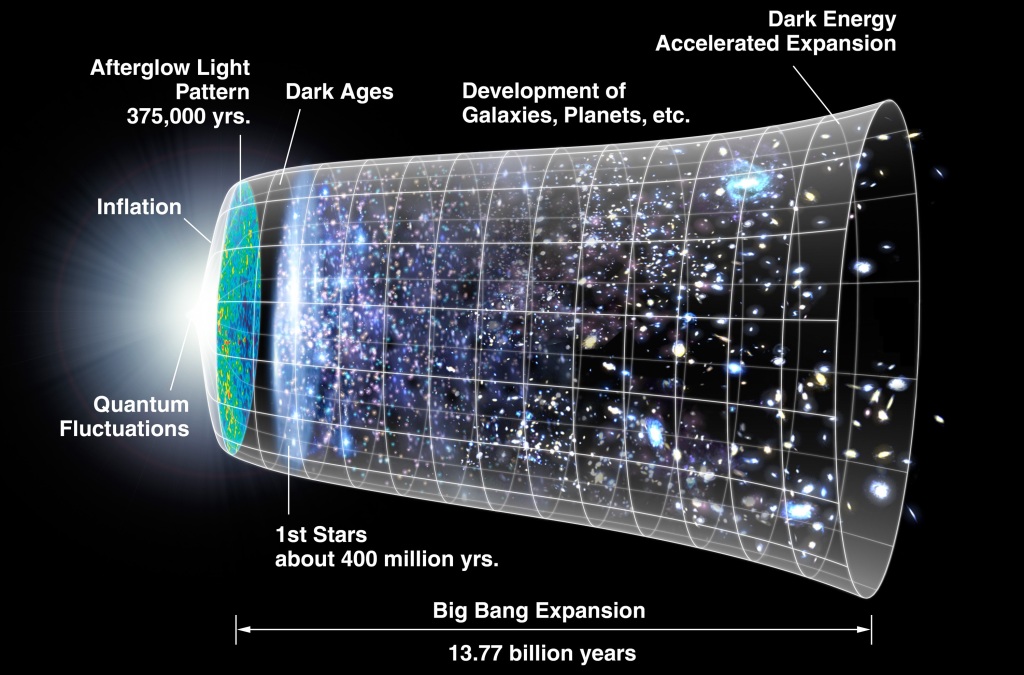
The Expansion of the Universe
It used to be believed that the Universe was static. In 1929 the astronomer Edwin Hubble discovered that the universe was expanding. He made this observation by analyzing the light from distant galaxies and noticing that their light was redshifted. I am going to explain what that means next.
Light emitted from elements, atoms and molecules have light absorption patterns that are unique to the atom/element in question. This is called a light spectrum. This makes it possible to identify the elements in a star and their proportions. Red shifted means that the absorption lines have moved towards red because the frequency of the light has been shifted due to the motion. This is called the doppler effect.
You can notice this phenomenon for the case of sound when an ambulance is coming towards you and then speeding by you. The sound changes. Hubble was using the redshift to the determine that further away the galaxy was the faster it was moving away from us.
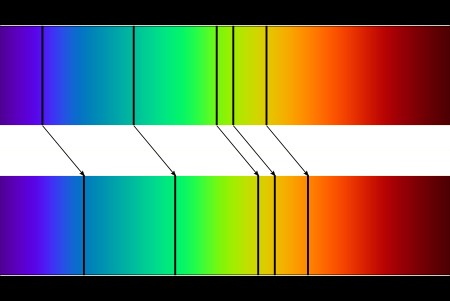
A natural explanation for this is that the universe is expanding, and that it once must have been much more compressed, but it is not the only explanation. However, there is more evidence.
The Cosmic Microwave Background Radiation
If you assume that the universe once was much more compact and much hotter than today, particles such as protons, neutrons and electrons would have been free and close together preventing light from freely moving around. However, as the universe kept expanding and cooling these particles eventually should have been able to form atoms allowing light or electromagnetic radiation to freely move around.
Some physicists, Alpher, Herman and Gamow predicted around 1950 that this should have left behind a detectable microwave background radiation. This radiation was detected by chance in 1964 by two physicists, Penzias and Wilson. This radiation had the expected properties and careful study of this Cosmic Microwave Background Radiation (CMBR or CMB) has given us a lot of information about our universe and may give us information about other universes (multiverses).
Its existence is strong evidence that the universe once was very compressed and much hotter, i.e., the Big Bang. An interesting fact is that in old TVs, between the channels (old people will remember this), you had this fuzz, or war of the ants as some people called it, and part of that TV fuzz is the CMBR.
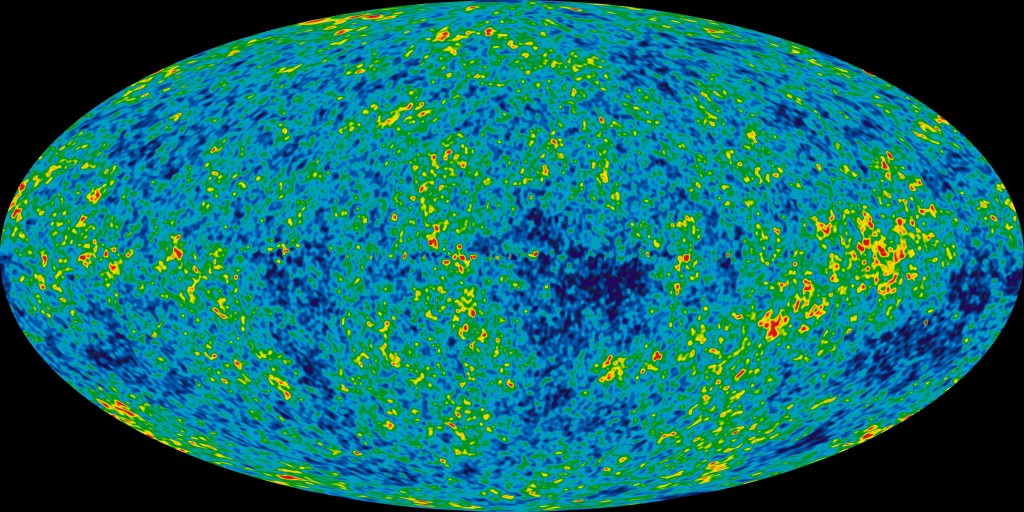
You can watch a 4-minute video about the discovery of the CMBR narrated by Neil DeGrass Tyson on this PBS web page by clicking here.
Abundances of Light Elements
Yet another piece of evidence is the relative abundance of hydrogen and helium compared to heavier elements. The physics at the beginning of the Universe under the Big Bang tells us that initially regular matter should have consisted of 75% hydrogen and 25% helium and hardly anything else, and that is composition the oldest stars had when they were new. In addition, the oldest stars we’ve found appear to have an age just under the 13.8 billion years that we get for our Universe assuming the Big Bang theory (that’s another piece of evidence).
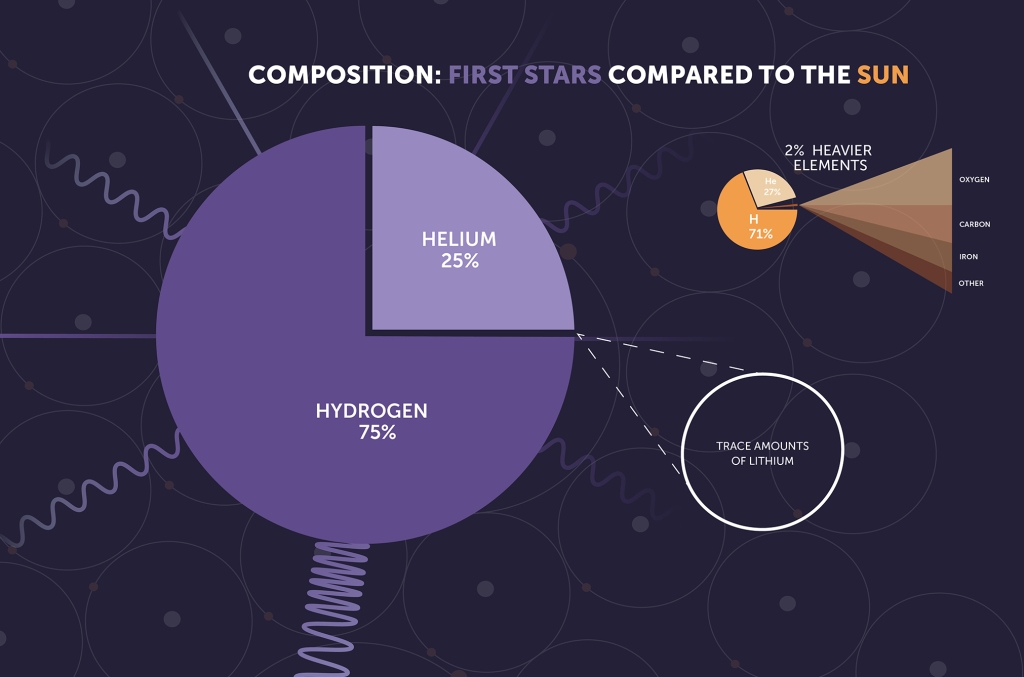
A Very Brief History of Time
So, it all started with a quantum fluctuation. The first 0.000000000000000000000000000000001 seconds is called the inflationary period characterized by super-fast expansion, much faster than the speed of light, as we know it today. At this time the strong nuclear force becomes distinct from the weak nuclear force.
I should point out that during the first 0.0000000000001 seconds the physics laws may not have applied in a normal sense. I should also point out that this was not an explosion. An explosion explodes into something but there was nothing else outside of the universe, so this is more like superfast growth.
At a fraction of a second protons and neutrons form from quarks and after one second neutrinos came into existence and if primordial black holes exist, they were formed at this time too. After two minutes nucleus consisting of neutrons and protons are formed, and the first elements hydrogen and helium formed. After 20 minutes an opaque hot plasma forms, after 100,000 years neutral helium atoms form, and after 375,000 years CMBR is created, etc.
This is just a small sample of everything that we know happened after the Big Bang, based on the known laws of physics. You can read about all the details in books like The First Three Minutes by Steven Weinberg or A Brief History of Time by Stephen Hawking.
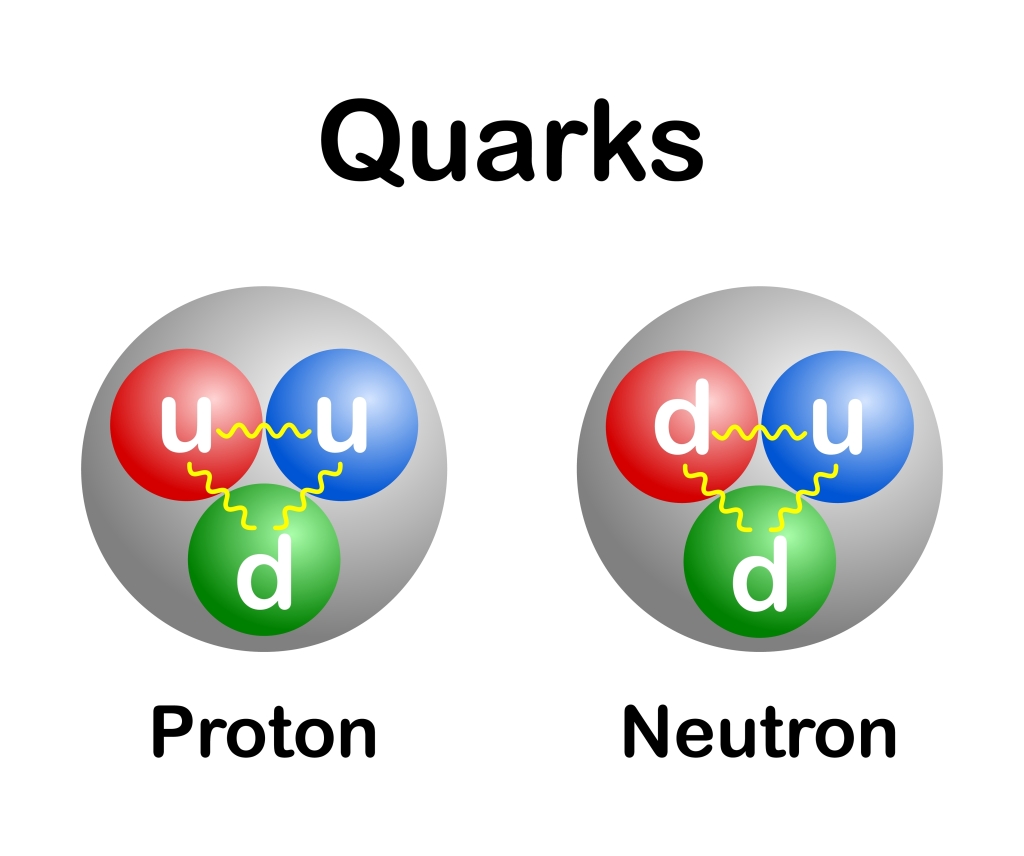
Pre–Big Bang Cosmology
So, what was there before the Big Bang, if anything? Well, that part is speculation, but there are many good ideas. A popular hypothesis speaks of quantum fluctuations setting off the Big Bang. There are models in which the whole of spacetime is finite, including the Hartle–Hawking no-boundary condition. This means that time itself came into existence with the Big Bang and therefore nothing could have preceded it. This means that the Big Bang could not have been caused or created by anything else, just like a universe that has existed eternally could not have been caused or created by anything else.
In a sense, despite being 13.8 billion years old, the universe in this scenario would have always existed. Because the concept of “always” stops at 13.8 billion years ago. Stephen Hawking used the analogy of the north pole. You can’t go further north from the north pole.
There are other models that include multiverses, for example, eternal inflation, in which universal inflation ends locally here and there in a random fashion, each endpoint leading to a bubble universe, expanding from its own big bang. You can view this model as inflation being the river of time with the various universes popping up like bubbles in the stream.
In another model inflation is due to the movement of branes in string theory and Big Bangs are the result of colliding branes. There are cyclical models, such as Nobel Prize winner Roger Penrose’s Conformal cyclic cosmology in which one universe gives rise to another universe as it dies.
Notice that Pre-Big Bang Cosmology is speculative, but the reality of the Big Bang is backed by strong evidence.
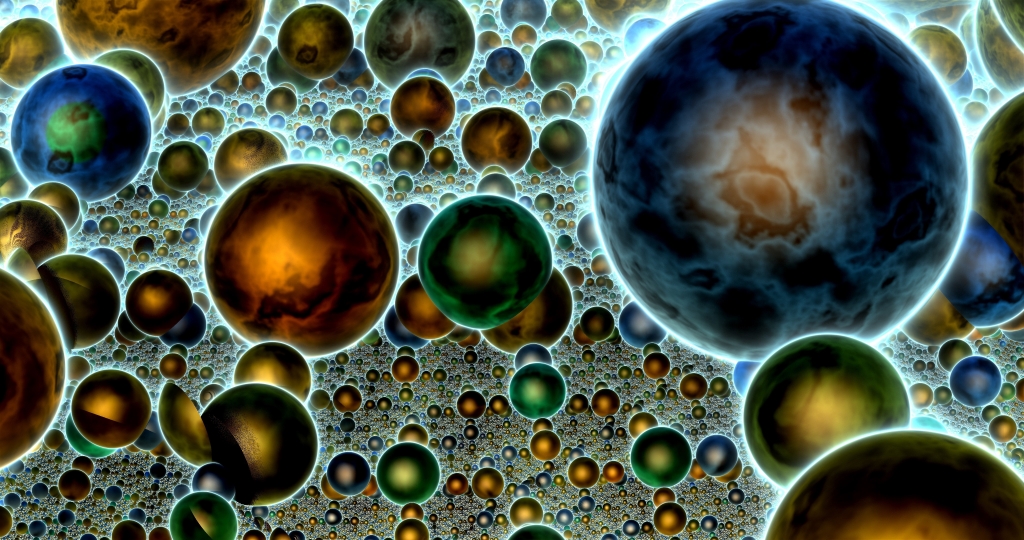


This is quite detailed, Thomas, but on the whole, understandable to a non-physics person like me. I wish you’d been my science teacher, I think I would have like it better. A most interesting post, thank you.
LikeLiked by 1 person
Thank you so much for your kind words Robbie.
LikeLike
Fantastic overview of the Big Bang, Thomas, and I appreciate the many finer details that make for additional reading. Thank you!
LikeLiked by 1 person
Thank you so much Grant for your kind words
LikeLiked by 1 person
Very nicely and concisely written, as always, Thomas. And w/pics! 🙂
LikeLiked by 2 people
Pics are always neat enhancements, aren’t they?
LikeLiked by 2 people
Thank you Alex, and allegedly adding pictures if you have more than 700 words makes it more likely that google index the page
LikeLiked by 2 people
Thank you so much Denise. Yes I like adding pictures.
LikeLiked by 2 people
Thomas, you hit another great post out of the ballpark!
LikeLiked by 1 person
Thank you so much Alex
LikeLiked by 1 person
Very well explained Thomas. I especially like the simple explanation of a fraction of a second, 20 minutes and then hundreds of thousands of years. It makes it easier to put it into place, more than any other description I’ve read. Maggie
LikeLiked by 1 person
Thank you so much Maggie. The book the first three minutes by Steven Weinberg reads like a chronology of the Universe and it does not stop at three minutes in continues to 380,000 years. Unfortunately it was written in the 1970’s and needs an update.
LikeLike
Charlee: “Our Dada was just listening to a podcast the other day about the Big Bang and Dark Energy and how Dark Energy seems to be changing and how the Cosmological Constant might not really be a constant.”Java Bean: “Ayyy, sounds like it could need a new name, then …”
LikeLiked by 1 person
It sounds like a very interesting podcast Charlee. I would like to watch it too. And you are right Java Bean.
LikeLike
Have you ever heard of the infinite regression objection?
One argument is “what caused the Big Bang? And what caused the cause of the Big Bang?” And so on.
Per the Second Law of Thermodynamics, the early Universe must have had much less entropy than the Universe does today.
Is the Universe a closed system? Is there anything beyond the Universe to act on it?
LikeLiked by 1 person
You are right about the Second Law of Thermodynamics and Roger Penrose, whom I mentioned, showed that this was a problem for the “big crunch” cosmology (also cyclical). The universes in that model could keep remerging forever. However, his conformal cyclic cosmology avoids this problem as he explains in his book. I’ve heard of the infinite regression objection in the context of the cosmological proof for a creator. However, I have not heard of it in this context. Perhaps it seems like you could apply it to the conformal cyclic cosmology. However, in that case the cycles are caused by a given mechanism, perhaps quantum fluctuations. Could you call that a creator? I don’t know. But it is an interesting philosophical point. About, Is the Universe a closed system? Is there anything beyond the Universe to act on it? Those are big questions. But all those models I mentioned are speculation.
LikeLike
It is all so fascinating Thomas.. and Mind boggling too… I dare say too in another 100 years we shall know even more about the Universe and Cosmic events that led us to be here in the Now…
Which is less than a blink of an eye.. 🙂 Have a great weekend Thomas…. 💖
LikeLiked by 1 person
You are so right Sue. 100 years ago we knew much less about the Universe than we do now. Before 1923 we did not know about the existence of other galaxies, and we did not know until 1929 that those other galaxies were moving away from us. We knew of very few elementary particles and a very limited understanding of atoms compared to now. Who knows what we will know in 100 years. And 100 years is a blink of an eye compared to billions of years. Have a great weekend you too Sue.
LikeLiked by 1 person
🤗 have a relaxing one Thomas 😌
LikeLiked by 1 person
Thank you too Sue
LikeLiked by 1 person
Interesting and very well explained in laymans terms, Thomas I have read ” A Brief History of Time” it took me a while and I reread all of the chapters to get a better understanding 🙂
LikeLike
Thank you so much Carol. I also read a Brief History of Time, and I loved it but like you say, it is a challenging book to read.
LikeLiked by 1 person
Absolutely, Thomas but I was pleased I took the challenge I have now passed that onto one of my grandaughters-smile-
LikeLiked by 1 person
That sounds like a great idea
LikeLiked by 1 person
Interesting and mind-boggling too, Thomas. The more we learn, the more unanswered questions there are.
LikeLiked by 1 person
Thank you Audrey. You are so right. I view our collective knowledge as a ball/sphere growing into the unknown. The surface of the ball/sphere are the unanswered questions. The more we figure out, the larger the ball gets, but the larger the surface gets too. The space beyond the surface correspond to what we don’t even know that we don’t know, so we can’t even ask questions about that.
LikeLiked by 1 person